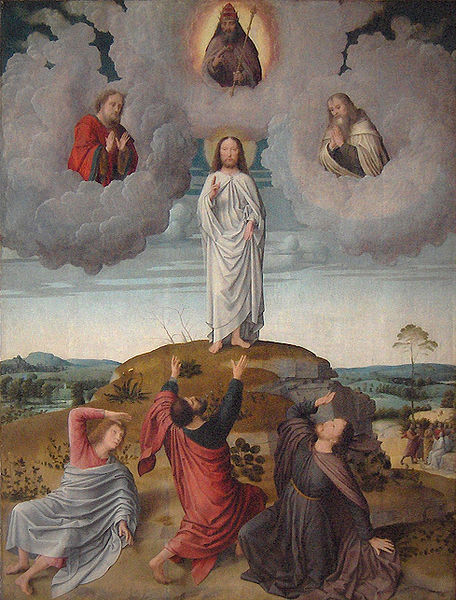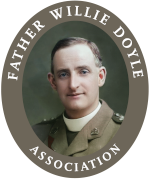
I wish I could write to you at length about grace. It is a fascinating subject. You are quite right in calling it “a participation of the divine nature,” since Scripture uses almost the same words to describe it. A comparison of the Fathers of the Church helps to explain things a little. A piece of iron, they say, placed in a fire does not in reality change its nature, yet it seems to do so; it burns and glows like the fire around it, it cannot be distinguished from the fire. In similar wise a soul clad in grace borrows beauty and magnificence from God’s beauty and magnificence; it seems to partake of the nature of God. What joy to remember that every tiny thing done for God, an act, a word, a glance even, brings fresh grace to the soul, makes it partake more and more of the nature of God, until St. Paul has to exclaim: “I have said you are gods!” and no longer mortals. Our Lord longs for this transformation, and so He sends many hard trials to hasten the day of this perfect union. Let Him, then, have His way. You can have perfect confidence that He is doing the right thing ever and always. Holiness is really nothing more than perfect conformity to God’s Will, and so every step in this direction must please Him immensely.
COMMENT: In today’s Gospel we read about the Transfiguration, whereby Jesus shows just a small glimpse of His Divine glory. Even this small glimpse of His Divinity is enough to dumbfound the apostles and fill them with fear. While the earthly transfiguration, as such, was obviously unique to Christ because of His Divinity, it remains true that we are all meant to be “transformed” in some spiritual way by grace.
However, this transformation can also be physical in some way in the lives of the saints. There is a temptation to discount such phenomena as part of as mythical “Golden Legend” of the saints. Sometimes it can be good to be a little sceptical about mystical phenomena, but it is surely not the Christian position to completely and automatically dismiss such phemonena out of hand entirely.
We read in the lives of many saints about how, on occasion, others thought that they could perceive a certain radiance around them. The Book of Exodus tells us how the face of Moses was shining and radiant after he came down from the presence of the Lord on Mount Sinai. These tales are not confined to the distant past; for instance there have been reports of how acquaintances of St John Paul II perceived that his face also shone on occasion. Those who were present at the apparitions at Lourdes also reported a radiant look on the face of St Bernadette during her visions, and it was the power of this radiance that convinced them of the authenticity of the visions. Similarly, those present when St Pio said Mass could also perceive a radiance in his face.
Perhaps the same internal transformation through grace was at work in Fr Doyle’s soul at times. Here is the testimony of his brother, Fr Charles Doyle SJ:
Willie and I were dining at Melrose one evening. I arrived first, and I was looking out of the drawing room, when I saw Willie coming up the drive. I can still see his face as he came towards the house. It had an expression of sweetness, brightness, and holiness that was quite astonishing. During the last time that he was at home on leave from the Front, he came down to Limerick where I was stationed. We went out for a walk together. Coming home, we met a number of people walking… As each couple or party came near us, I noticed all eyes became fixed on Willie with a curiously interested and reverential expression. I stole a glance at him. His eyes were cast down, and upon his face was the same unearthly look of sweetness and radiance I had seen on it that evening years before at Melrose.
Was Fr Charles mistaken? Did he imagine it? We shall never know. But our instinct surely tells us that, sometimes, internal holiness manifests itself externally in some fashion. Here is some similar testimony from a soldier who knew Fr Doyle in the Great War:
Fr Doyle is a splendid fellow. He is so brave and cheery. He has a wonderful influence over others and can do what he likes with the men. I was out the other evening with a brother officer, and met him. After a few words I said: ‘This is a pal of mine, Padre; he is a Protestant, but I think he would like your blessing.’ Fr Doyle looked at my chum for a moment with a smile and then made the sign of the cross on his forehead. When he had passed on, my pal said: ‘That is a holy man. Did you see the way he looked at me? It went right through me. And when he crossed my forehead I felt such an extraordinary sensation.’
We shall conclude today with this reflection from Fr Gabriel of St Mary Magdalen, the Carmelite Spiritual writer:
Glory is the fruit of grace; the grace possessed by Jesus in an infinite degree is reflected in an infinite glory transfiguring Him entirely. Something similar happens to us; grace will transform us “from glory to glory” (2 Cor. 3:18) until one day it will bring us to the Beatific Vision of God in Heaven. But while grace transfigures, sin, on the other hand, darkens and disfigures whoever becomes its victim.
